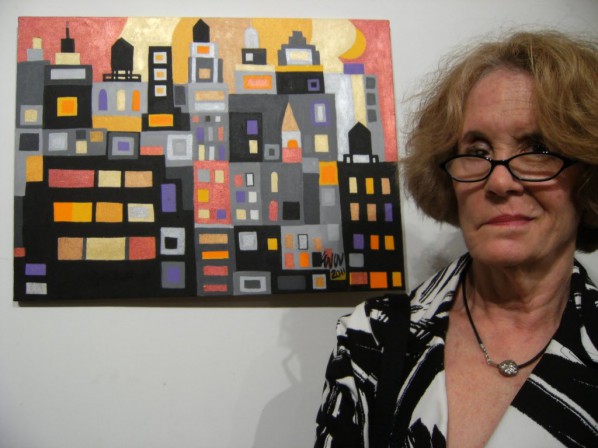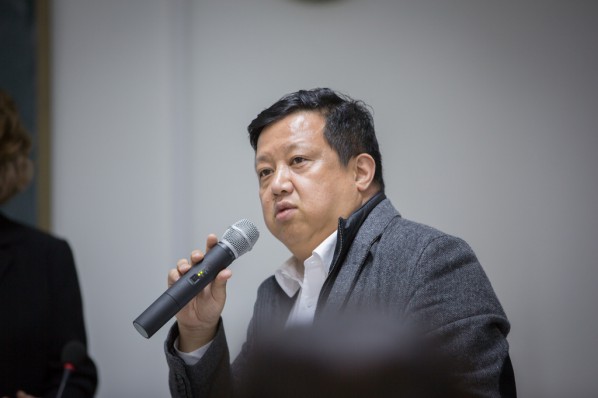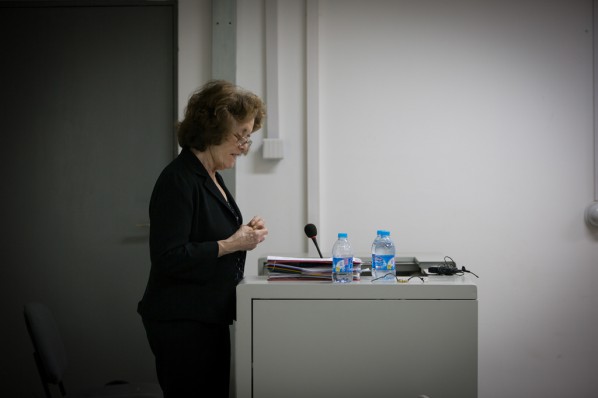
Joan Jeffri is the Founder and Director of the Research Center for Arts and Culture housed first at Columbia University and now at the National Center for Creative Aging. She is former Director of the Program in Arts Administration at Columbia University and past President of the Association of Arts Administration Educators and the International Arts Medicine Association.
Ms. Jeffri is the author of Respect for Art: Visual Arts Management and Administration in China and the United States (2008) with Professor Yu Ding from the Central Academy of Fine Arts, Beijing Arts Money: Raising It, Saving It, Earning It; (1989) and The Emerging Arts: Management, Survival and Growth (1990). She is also the editor of Artisthelp: The Artist’s Guide to Work-Related Human and Social Services (1990) and The Actor Speaks, The Painter Speaks, and The Craftsperson Speaks (1994, 1993, 1992). From 1981-1990, she served as an executive editor of The Journal of Arts Management and Law. She has conducted numerous studies including Still Kicking, a study of aging performing artists in NYC and LA; Above Ground, a study of aging visual artists; Changing the Beat: A Study of the Worklife of Jazz Musicians; Making Changes: Facilitating the Transition of Dancers to Post-Performance Careers with William Baumol and David Throsby; Information on Artists I, II and III and The Artists Training and Career Project.

At 6:30 pm on April 17, 2014, the lecture “Art Management and the Developing History of American Museums” was held in Room 102 of building 17, CAFA. Host Professor Yu Ding said, speaker Joan Jeffri was scholar-in-residence at the American university, former director of the Department of Art Management, director and founder of the Art and Cultural Research Center of Columbia University, who deeply researched the field of art management, with a lot of publications. When the Department of Art Management, CAFA was found in 2005, Joan Jeffri guided it a lot, and set up a 2-day workshop, while often coming to CAFA to give lectures. Yu Ding and Joan Jeffri have been acquainted with each other for more than a decade, and once were in cooperation to finish the book “Paying a Tribute to Art: Chinese and American Visual Art Management”, which was the first book to discuss the visual art management across the two countries.

Jeffri said, focusing on art was the characteristic of CAFA, but she didn’t focus on art, she hoped to share the developing history of the American museums and the experiences of art management to offer teaching suggestions to the Department of Art Management. At the same time she pointed out that we couldn’t transplant the system of one country to another one, because the contexts were different, it was necessary to change it according to the detailed situation. She then briefly introduced the concept and functions of American museums, American International Commission and the Institute of Museum and Library Services.
Jeffri said museums were nonprofit organizations with an educational attribute, and the collecting, displaying, protecting and studying of collections, as well as opening to the public. The American Association of Museums had stipulated the functions of museums, require them to open at least 1000 hours a year, with 80% of the works being in permanent collections, a full-time curator, and adequate financial resources. The International Commission was a non-profit permanent organization, aimed at serving society, promoting social development, it recruited, collected, researched, communicated, displayed, and was open to the public, for the purpose of learning, education, and entertainment, which witnessed the existence of human beings and their living environments. The Institute of Museum and Library Services was a public or private non-profit organization or institute, for the purpose of education or aesthetics, using professionals, beholding and applying tangible items, to maintain and regularly showcase items to the public. Subsequently, Jeffri introduced the developing history of American museums. Charleston Museum in South Carolina was the first museum established in the US in 1773. A “trained curator” was appointed to the Museum of Modern Art in New York in 1929, and from then on education became more and more important in the museum system. The museums were not only interested in art, but also involved in other aspects in the 1960s, such as the Metropolitan Museum of Art which focused on the issue of immigration.

There are a total of 17500 museums in the US, a quarter of which are art museums, visited by 8.65 million people every year, in the US, there is one volunteer in every 480 people, and in educational projects it spends 1800 class hours, costing more than 1 billion USDs, 93% of the museums have permanent collections. At the same time, Jeffri pointed out that American museums were faced with financial plight, as the government funding and private donations became fewer and fewer, the financing activities of the museums also began to be diverse, and they brainstormed to avoid taxes. In addition, Jeffri thought the educational objects of the museums should be more open to the public, and think aboutcertain groups, such as the disabled, trying our best to provide convenient services to all groups.
Finally, Jeffri said in addition to the financial plight in American museums at present, it had various issues such low wages and the status of staff, and the work lacked supervision. Although the museums had a long history in the US, they should learn that the museums were established in other contexts and historical backgrounds, through learning and communicating with each other to promote their developments.
Journalist: Ye Yuanfeng, Photo: Yang Yanyuan/CAFA ART INFO.
Translated by Chen Peihua and edited by Sue/CAFA ART INFO.




























